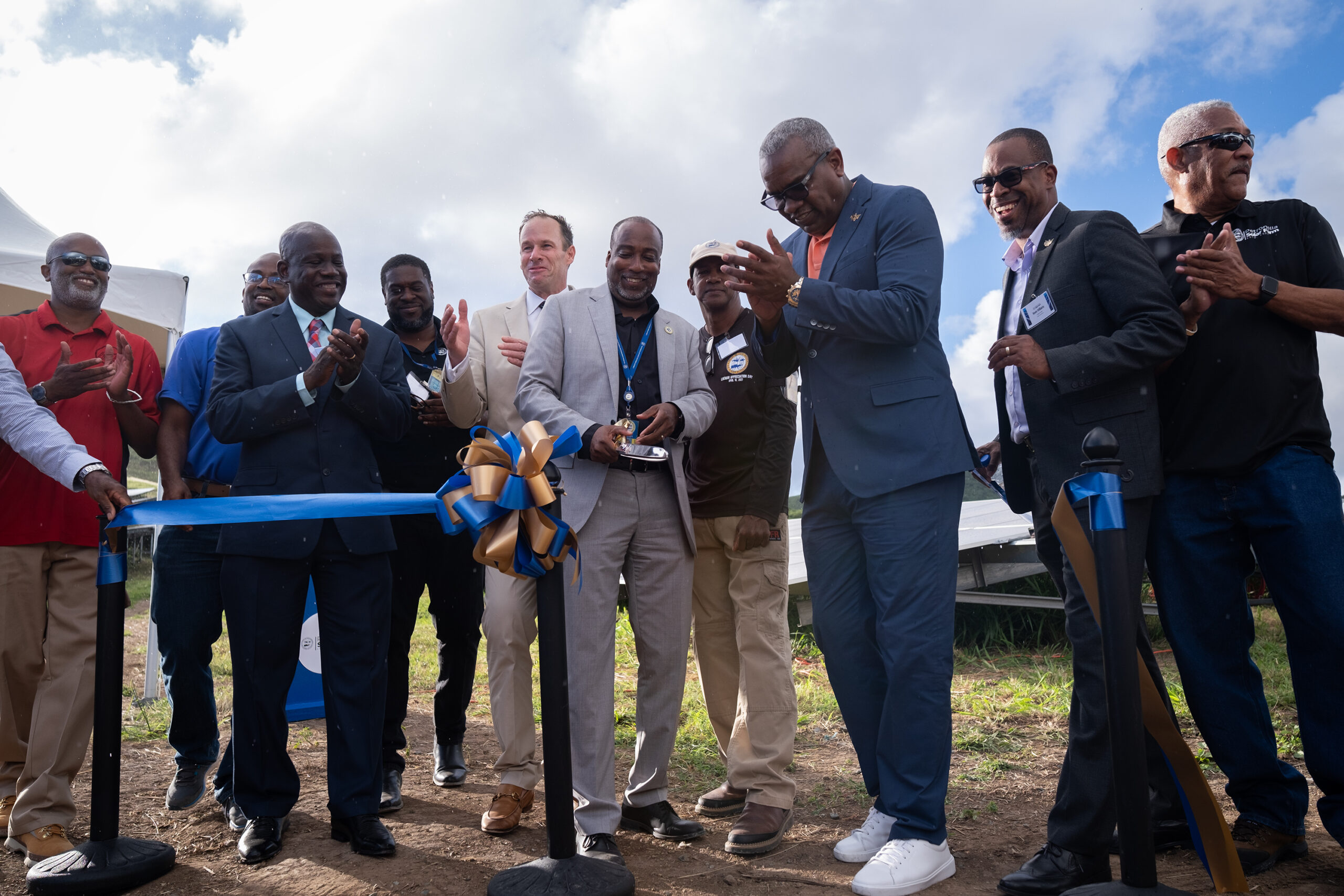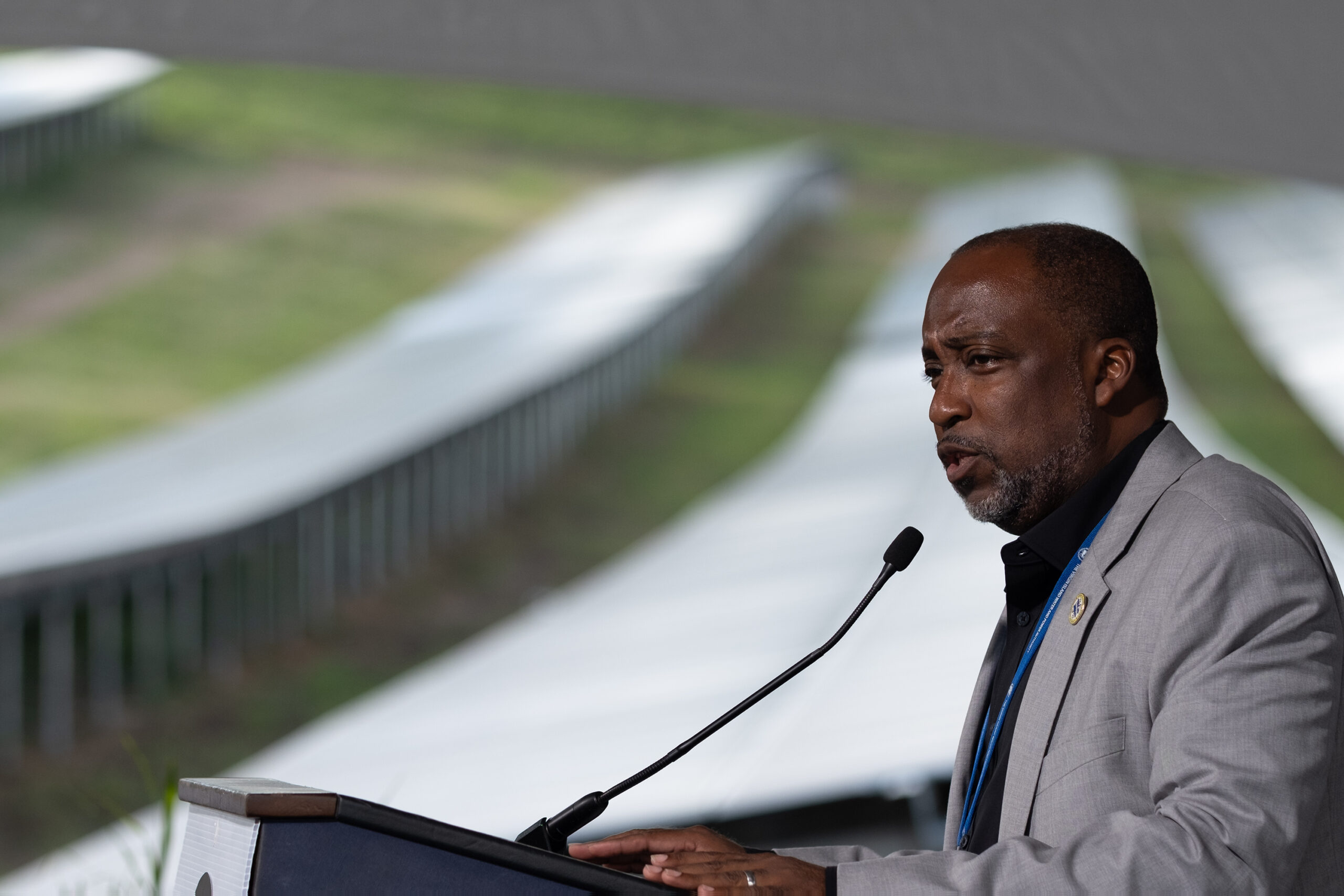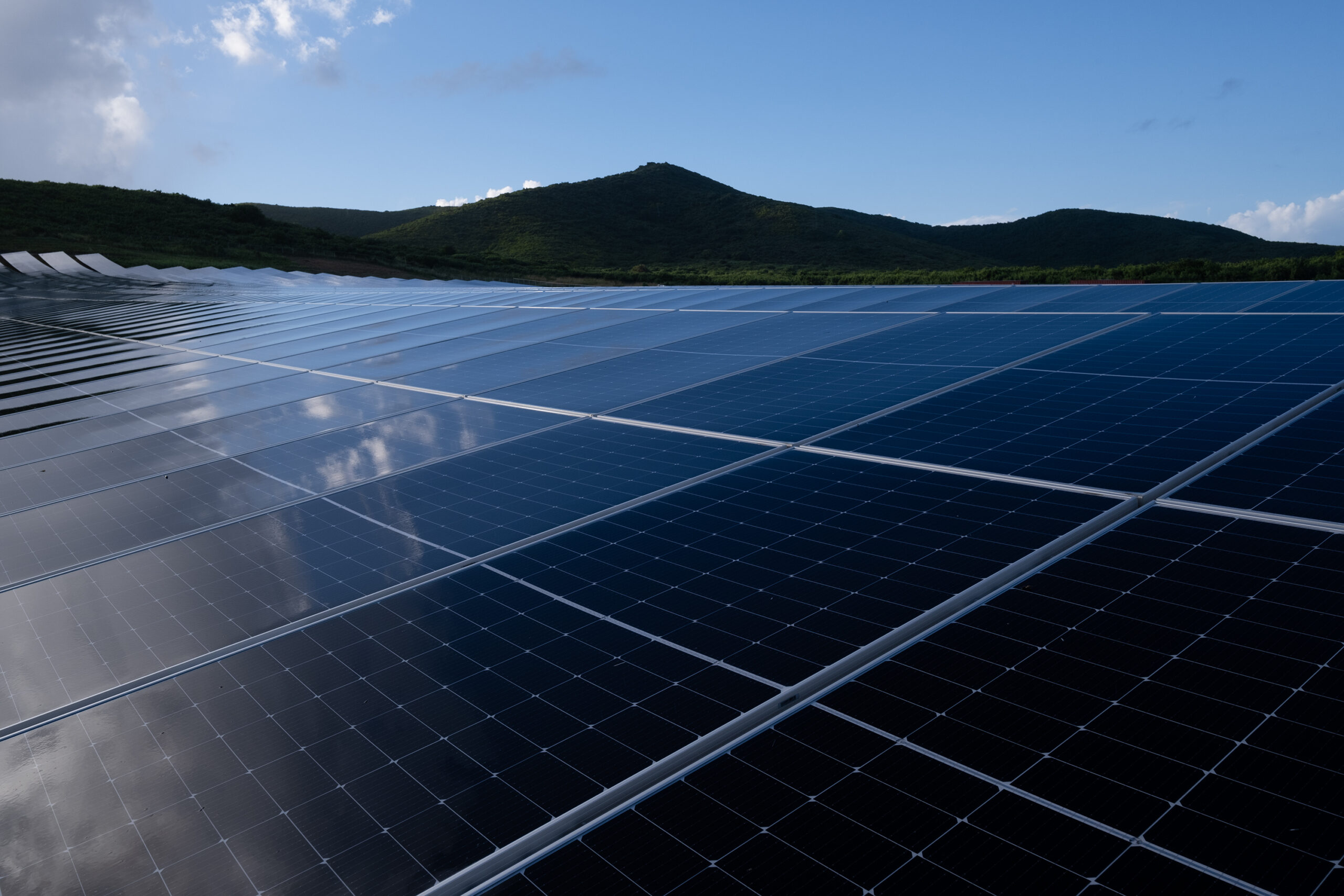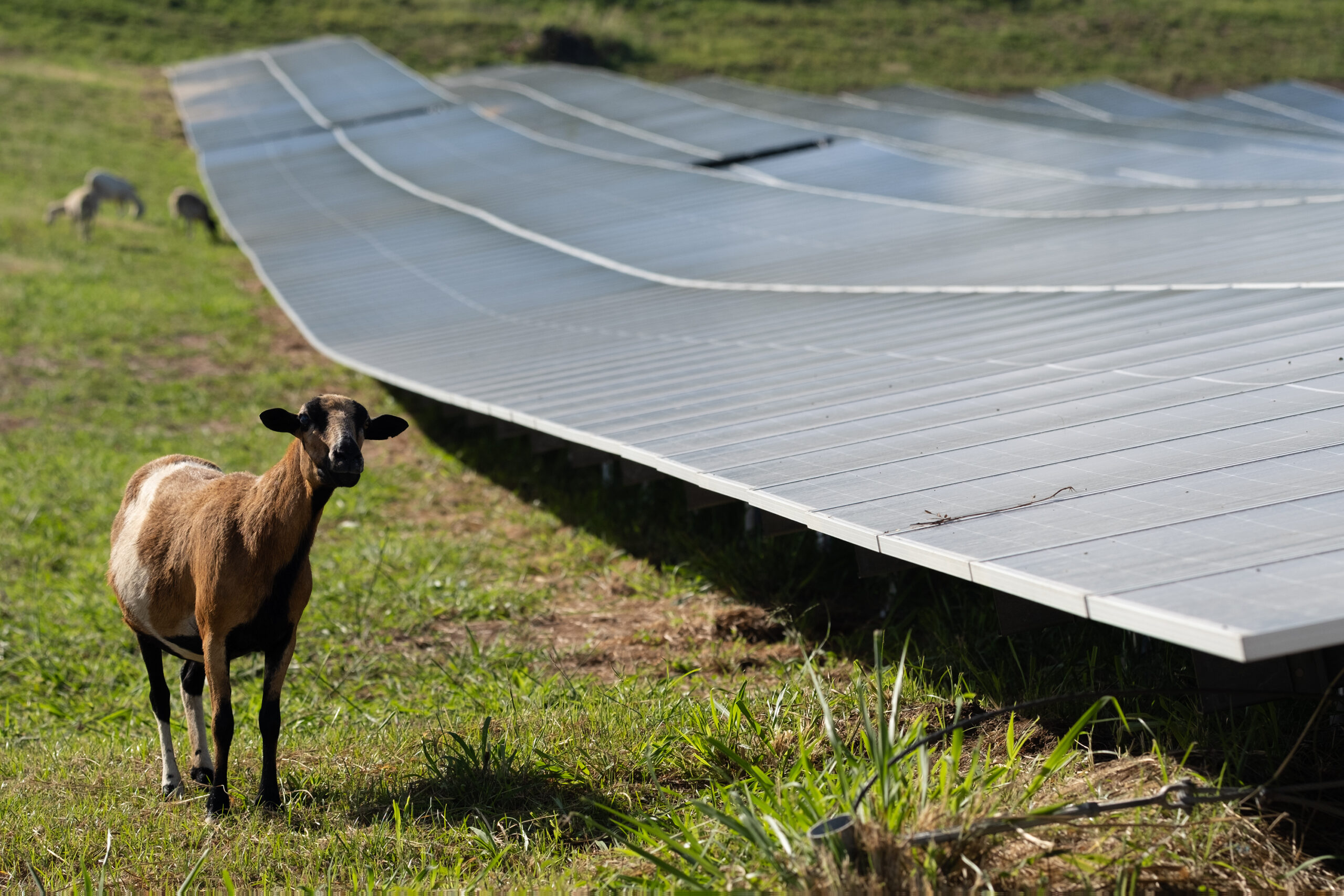
Officials from the central government, the V.I. Water and Power Authority and public-private partner VIElectron cut the ribbon for the Petronella solar farm on Tuesday afternoon, celebrating the connection of the territory’s newest and largest solar array to the St. Croix power grid.
“This is truly clean energy — no noise pollution, no air pollution, no water pollution. Truly clean energy,” said WAPA Chief Executive Officer and Executive Director Karl Knight. Recalling the time when a fuel barge got stuck in Puerto Rico and caused rotating power outages earlier this year, Knight called the solar farm’s output “indigenous” energy that will always be available.
“I don’t have to wait for it to show up, don’t have to worry where it went,” he said. “If the sun rises tomorrow, Petronella will produce energy. So that gives us the energy security that we don’t have with our fossil fuel generation.”

The solar farm comprises 30,000 panels and is capable of producing up to 13.05 megawatts of power. Excess energy is stored in batteries. According to a presentation shared by WAPA, the solar farm will benefit approximately 4,500 customers who draw power from feeders 2A and 3A on St. Croix. A second solar farm in Estate Hogensborg is under construction.

Christian Loranger, owner and manager of solar farm builder VIElectron, said the site comprises 30,000 panels, millions of pounds of steel, five million nuts and bolts and 250 miles of wire.
“You don’t drown from falling in the river, you drown by not getting out,” he said. “When I look around here today, I see the Virgin Islands getting out of the river when it comes to energy problems.”
Under the Water and Power Authority’s interconnection agreement, WAPA will buy power generated by the solar farm at nearly 11 cents per kilowatt-hour and excess energy stored in the site’s batteries will be sold to the utility at 5.45 cents per kilowatt-hour. On Tuesday, Loranger said ownership of the farm was transferred to a nonprofit, and the ultimate goal is to transfer ownership to the Virgin Islands government.

Loranger told The Source the transfer was done in part to facilitate funding under federal programs. The Petronella and Hogensborg projects alone, he said, brought in $100 million from the federal government. Planned solar farms on St. Thomas and — eventually — St. John could bring that number up to $400 million.
“Right now, this power is 10.9 cents per kilowatt-hour,” Loranger said. “If we can get federal funds to pay for it, it’s in the Virgin Islands’ hands — it’ll go to zero. Now, look what you can do with the power price. You can really pull that power price down. That’s what we’re going towards.”
Even at the current power price, Knight told The Source that the solar farm produces electricity at nearly half what it costs the utility to produce the same kilowatt-hour at the island’s Richmond Power Plant.

“So that’s a savings that, ultimately, is going to accrue to the ratepayers and to our customers,” he said. Later, Knight acknowledged that customers won’t see lower bills right away.
“Our first and prime-most mission is to stabilize the grid, build back reliability and … reduce the frequency of outages — and then, of course, start passing on those savings to our customers,” he said.
The Water and Power Authority has long contended with mounting debts to vendors and years of deferred maintenance. Those problems came to a head last spring, prompting Gov. Albert Bryan Jr. to declare a state of emergency amid frequent, rotating outages. That state of emergency has been extended multiple times. On Tuesday, Bryan told The Source that he didn’t see the emergency going past March 2025, but he acknowledged that WAPA’s problems will take longer to fix.
“And then I want to make sure that people understand that even when we start to reduce the rates, there has to be a reasonable profit rate for WAPA. You cannot run a business on ‘cost equals price,’” he said, adding that the utility had to be able to make enough money to deal with hikes in oil prices, storms or other disruptions.





